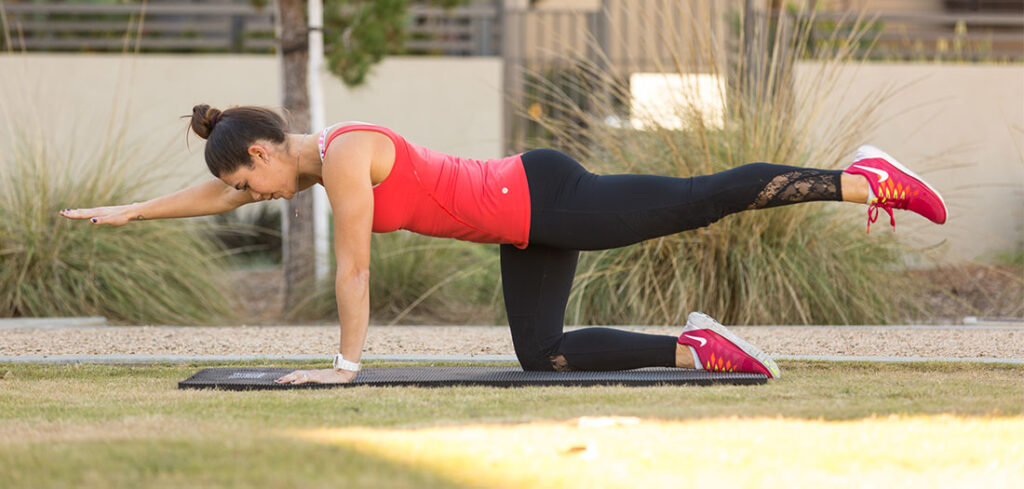Written by: Nick Agius (Accredited Exercise Physiologist)
The physiological make up of the human body allows for extremely complex movement capability and diversity.
To allow the body to live up to these capabilities and perform dynamic movement, the body requires stable joints, and stabilising musculature acting on each of the joints. Without stability, the body would collapse forwards, backwards and sideways, requiring much more physical effort to sustain a posture or movement.
Stability is defined as:
“the coordination of surrounding tissue and the neuromuscular system to maintain the position of a joint”.
A great example of the importance of stability in the context of human movement can be demonstrated by the example of a person running / jogging.

Stability in Movement and Activity
This example is especially timely now during COVID19 restrictions as many people have embarked on running to maintain a healthy lifestyle. Being equipped with this knowledge of stability will be useful to reduce the risk of injury and improve running performance.
If a runner has stable lower limb joints that can maintain good technique, even during fatigue, the joggers joints will allow him/her to direct all of their effort in the sagittal plane (i.e. forward motions), rather than exerting force in the coronal plane (sideways movement).
If however, the runner had poor joint stability in their ankle for example, and the ankle was rolling outwards, the jogger would then be exerting force sideways and therefore, lose efficiency. This means that the runner would now be exerting force in sideways and forward motions, requiring more muscular effort (and energy) to jog.
The jogger may also have biomechanical deficiencies at their knees or hips, where the knees may cave inwards, and the hips may drop during their running gait.
A biomechanical deficiency at the ankle, knee or hip, will all cause forces to be directed in various planes of movement, rather than allowing the jogger to maximise the force they are producing into forward movements.
Not only will these deficiencies cause the jogger to fatigue more quickly, but prolonged running with poor mechanics may even lead to an injury. Injuries sustained during jogging are typically referred to as ‘overuse injuries’. These injuries are caused by persistent stress to the body, often relating to poor biomechanics.
Referring to this example of the jogger, the jogger may not experience any pain or symptoms if they went for their first jog in 6 months, and this may even apply to their next 9 jogs.
Stability and Injury Risk
However, pain and symptoms may start to develop after a longer period due to the repeated stress and strain on the body. Examples of common injuries experienced in running are listed below:
- Plantar Fasciitis
- Achilles Tendinopathy
- Iliotibial Band Syndrome or ITB Syndrome
- Shin Splints
- Stress Fractures
- “Runners Knee”
- Hamstring Strain
By working on building ankle, knee and hip stability in conjunction with gradually building up running duration, the jogger will likely decrease their injury risk profile. These biomechanical changes will also increase their running efficiency.

So, the key takeaway message here is; by losing stability, efficiency is lost.
This is something that many inexperienced gym goers without help or direction may not realise. These people have not adequately built the surrounding structure of their house (or in this case, their body), and it may not be able to cope with the stress of a storm.
Therefore, by maximising stability and working on the framework of the house, it will be able to withstand the stress that it is put under. The unaided or undirected gym goer may or may not ever develop an injury, but they are more than likely not moving as efficiently as they can.
If you are interested in learning more about how to build a solid foundation of stability to assist in making your training more efficient, come in and speak to one of our Exercise Physiologists or Personal Trainers at Inspire Fitness for Wellbeing, or call us on 9857 3007.
